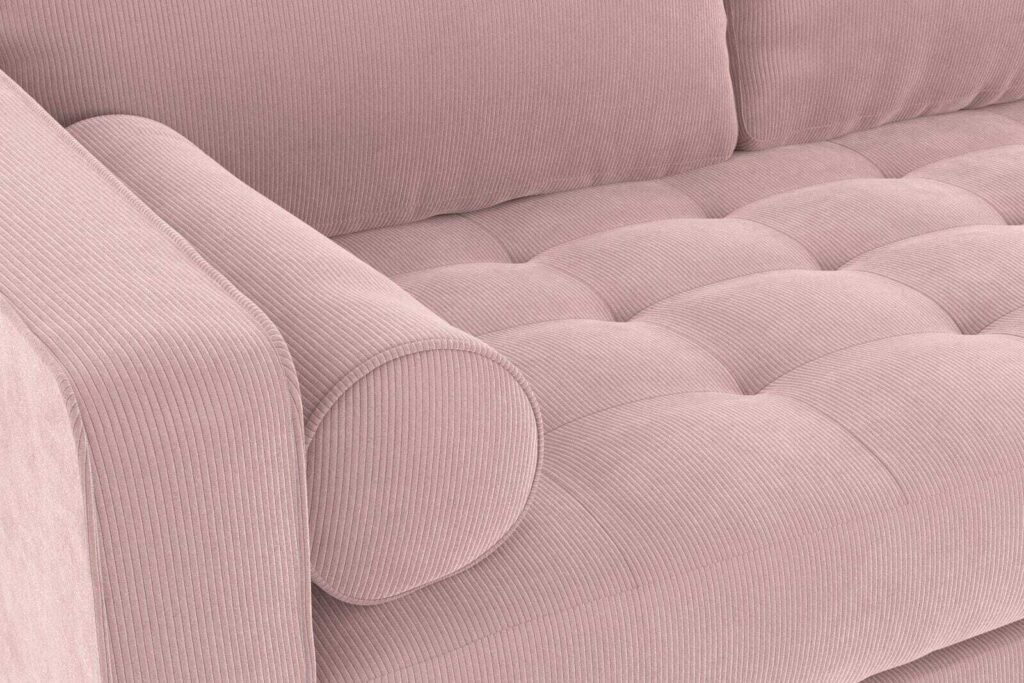Beyond reupholstery: modern fabrics are reshaping furniture's future
As upholstery textile specialists, we're witnessing a remarkable transformation in how furniture is being preserved and refurbished. While our focus has always been on creating durable, beautiful fabrics, we're now seeing these materials play an increasingly crucial role in furniture's sustainable future.
"There's too much stuff out there that's going to end up in a landfill. I hope what I'm designing now will retain its value as well as its quality, both real and emotional.” – Sheila Bridges, Women in Design
Today we’re sharing our first-hand insights from the growing demand for sustainable, long-wearing textiles that can give old pieces new life.

This showstopping velvet is anything but plain. Plus it's made with 100% recycled polyester, fully traceable and verifiable through the Global Recycled Standard.


The Perfect Storm of Change
The timing couldn't be better for furniture's great comeback story. We’ve found that two major trends have shaped the industry landscape in Tackling a Multi-Million-Ton Furniture Waste Problem:
- The rise of "fast furniture"—cheap, mass-produced items designed for short-term use.
- Increasingly mobile lifestyles, particularly among younger generations. These factors have driven disposal rates to historic highs, as people frequently move and discard bulky furniture rather than transport it.
According to Furniture Restoration statistics, furniture restoration and reupholstering typically extends a piece's life by 20-30 years. When you consider that carbon emissions from furniture are so high that just one piece of fast furniture can generate up to 47 kg of carbon dioxide emissions alone, the need for repurposing becomes even more obvious. Read more at The Environmental Impact of Furniture. Did you know? The upholstery restoration market is forecasted to reach $23.8 billion by 2027. The antique furniture restoration market in Europe is worth €1.8 billion.
From our vantage point in the textile industry, we're seeing a corresponding shift in fabric choices. Today's upholstery textiles aren't just about colour and pattern: it goes much deeper.
FibreGuard fabrics, for example, are more than just an aesthetic choice. They’re engineered for durability and easy maintenance, with sustainable production at their heart. This is as well as featuring deeply saturated colourways in different patterns! Through our innovative fabric technologies, we're proud to contribute to the creation of a circular economy.
3 driving forces behind the rush for reupholstery
Three key factors are powering this restoration revolution, and our textile expertise plays a crucial role in each:
First, sustainability concerns have moved to the forefront.
Our development of eco-friendly fabrics, including those made from recycled materials and organic fibres, helps reduce the environmental impact of furniture restoration. Each restored piece represents not just materials saved from landfills but a reduction in new production demands.
Second, never underestimate the power of sentimental value.
Our extensive fabric library allows restorers to either match original materials or choose contemporary textiles that honour a piece's history while updating its look for modern spaces.
Third, the economics make compelling sense.
Our focus on developing durable, stain-resistant fabrics means restored pieces can withstand years of use, making restoration increasingly cost-effective compared to buying new furniture.
Read more: Revolutionising contract furnishing: eco-friendly innovations in textile technology
Buy once, buy well
Lulu Lytle, co-founder of Soane Britain, suggests that adopting a “buy once, buy well” philosophy means that restoration provides significantly more value than replacement. She explains that we tend to cherish items we are both financially and emotionally invested in, much like how inherited items are often treasured more than impulsive purchases.
As textile manufacturers, we're meeting this demand with fabrics that combine beauty, durability, and environmental responsibility.


Looking to the future with FibreGuard
We're understandably excited about the future of furniture restoration, as leaders in textile innovation. The growing appreciation for quality and sustainability in furniture restoration perfectly fits our commitment to sustainability in textiles. Fast furniture and frequent moves have changed how we think about furnishings, but FibreGuard plays a crucial role in making restoration a viable option for today's consumers.
Now is the perfect moment to dive into furniture restoration. Thanks to innovations like FibreGuard's Stain Free technology, coupled with sustainable materials and a renaissance in quality craftsmanship, restoring furniture means more than just preserving cherished pieces. Each restoration project helps build a more sustainable future, one beautifully renewed piece at a time.
Choose FibreGuard: Where to Buy
While you can't purchase directly from FibreGuard's website, most well-known furniture manufacturers offer FibreGuard as an upholstery option for their pieces.
Custom upholstery shops and interior designers have FibreGuard fabric books on hand, allowing you to see and feel the fabrics in person before deciding. If you're working with a designer, they can order these fabrics through their trade accounts. For DIY enthusiasts, retail fabric stores sometimes carry FibreGuard options, though the selection may be limited compared to trade-only showrooms. You can also browse our digital fabric textures for free on the TwinBru platform. Find a design you like? You can order free fabric samples from TwinBru as well.
Contract designers: please contact our team directly.